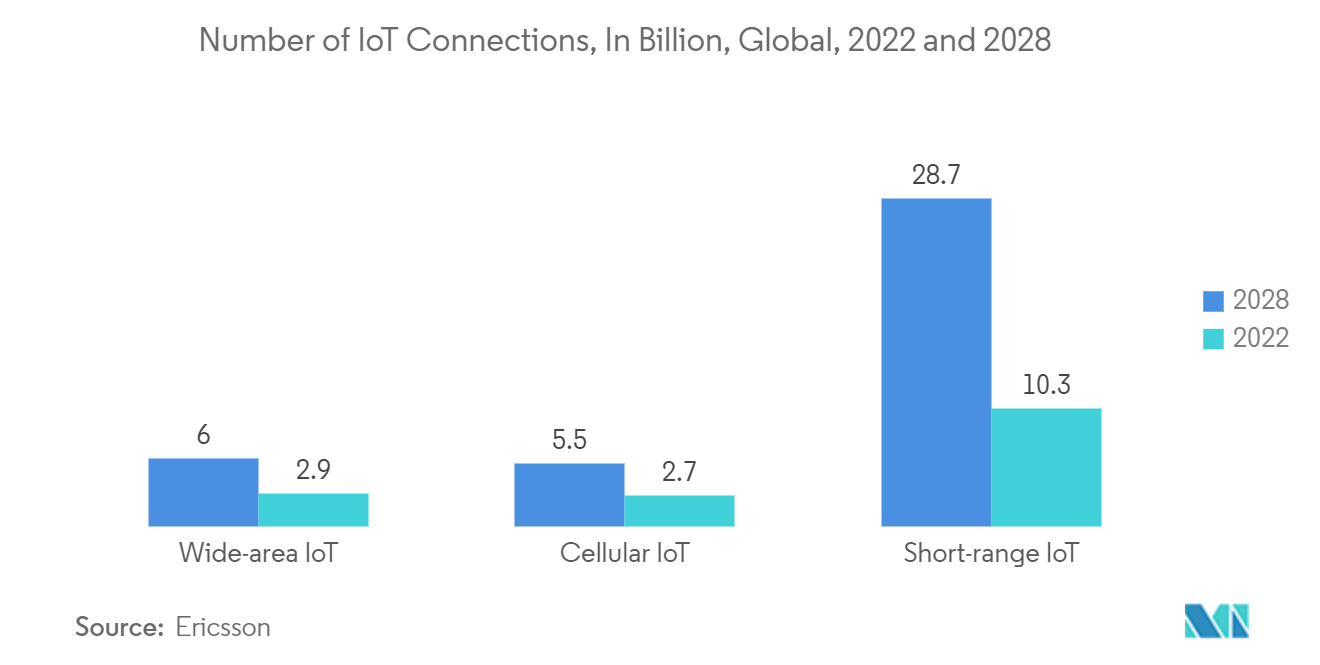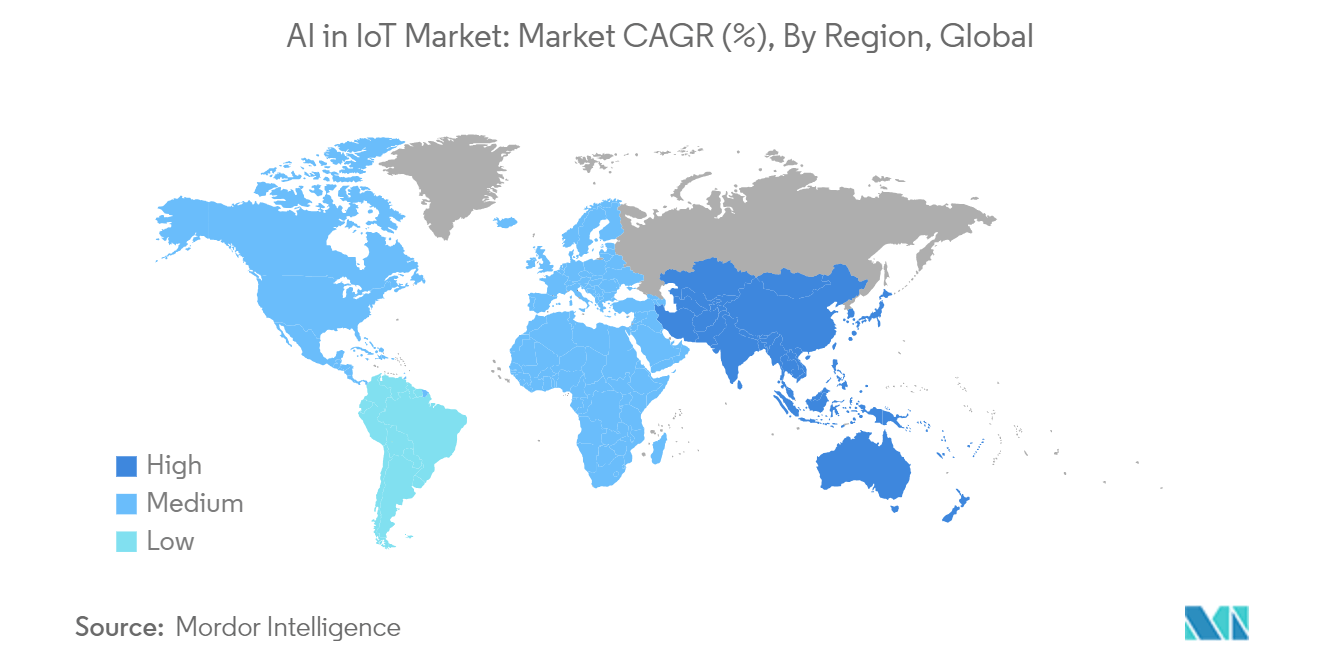Market Trends of AI In IoT Industry
Healthcare Sector Expected to Witness Robust Market Growth
- Healthcare organizations can improve human performance on tasks such as diagnostic or therapeutic decisions, supporting clinicians in treating diseases, etc., by collecting and analyzing high-frequency Internet of Things (IoT) sensor data and computer vision (AI). Routine physical assessments of mobility and balance are usual healthcare activities with significant potential to be transformed by combining IoT and AI technologies (IoT). With IoT, care providers can simplify assessment using fewer steps while making the test quantitative, consistent, and reproducible.
- Hospitals, clinics, pharmaceuticals, and academic institutes testing and storing vaccines, such as COVID-19 vaccines, still lack visibility on their refrigerators' real-time state and performance. Due to this, there is an increasing need for IoT-based predictive maintenance for vaccine logistics and safety. IoT can also improve diagnostic accuracy and remote patient monitoring, reduce the need for follow-up visits, reduce wait times, identify critical patients, and track medical equipment.
- Furthermore, innovations in AI and IoT allow hospitals to take full advantage of data, like CT scans and records of patient vitals. These systems enable doctors to monitor patient health remotely, even when not in the building, and identify which patients need immediate attention. IoT can also boost the accuracy of diagnoses for certain diseases like breast and lung cancer.
- Smart hospitals are utilizing IoT-connected technologies and robotics to deliver a new age of health support and treatment. There is an emergence of various IoT devices and applications designed for the healthcare sector, including sensors and apps for telemedicine consultations and remote healthcare monitoring. In this regard, IoT is helping to improve healthcare via real-time patient monitoring (fitness trackers, smart wearables, panic buttons, etc.), advanced diagnostics through smart image analysis, and robotic surgery. These applications help collect data to provide preventive measures for a person, early detection, and drug administration.
- Smart healthcare trends are expected to grow significantly as a result of the rising adoption of IoT technologies. For instance, in December 2022, ASUS, a computer hardware manufacturer, unveiled smart healthcare solutions at the Taiwan Healthcare+ Expo. The ASUS Smart Healthcare theme encouraged digital change as various products were displayed at the ASUS exhibit. The community health management, precision health, and telemedicine trends which are driving the digitization of Taiwan's medical institutions were addressed. Moreover, AI algorithms and IoT devices also helped hospitals manage community health, allowing them to transition from community hospitals to modern hospitals through digital transformation.

North America Is Anticipated To Hold Major Market Share
- North America is one of the major regions with significant market share because of the wide-scale adoption of AI and IoT technologies in many industries, like automotive and transportation, manufacturing, retail, and healthcare, which is one reason for the growth of the market studied in this region. North America is one of the leading regions with research into developing AI and IoT applications in new end-user industries. According to Cisco, the United States and Canada have the highest average per capita devices and connections as of 2022.
- The manufacturing platform of North American companies has undergone a digital transformation which is creating an opportunity for the AI solution providers in the manufacturing of IoTs in the country, which has been enabling these companies to control energy and water usage in manufacturing facilities, boost equipment resilience while reducing waste, and check product quality in real-time on the production line. Providing scalable predictive quality, predictive maintenance, controlled release, and touchless operations would be helpful in increasing the sustainability of production in the region's plants.
- Many global companies are partnering with market vendors to integrate AI-based IIoT into their production lines, fueling the market's growth. For instance, in September 2022, P&G and Microsoft signed a multiyear partnership agreement to revamp P&G's digital manufacturing infrastructure. According to the partnerships, the industrial internet of things (IIoT), digital twin, data, and AI would accelerate product delivery to customers and boost customer satisfaction while increasing productivity and lowering costs.
- The region has many global IoT and AI-based vendor providers, especially in the United States. In addition, the country has a high-tech ecosystem, and the region's automobiles have become increasingly software-oriented. When AI is coupled with the IoT, the devices can analyze data, make decisions, and act on that data without human interference. Tesla's self-driving cars are examples of AI and IoT working in tandem. With the incorporation of AI, self-driving cars predict the behavior of cars and pedestrians in various circumstances. For instance, they can determine road conditions, weather, and optimal speed and get smarter with each trip.
- The industry's potential for growth in North America is reflected in the fact that many American AI platforms and software manufacturers collaborate with IoT solution providers to improve their market share in the area.

